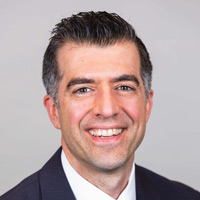Boost Your Retirement Income in 3 Steps
Low interest rates are a big challenge for retirees today. To help cope, try these three strategies.


A long time ago in a galaxy far, far away, retirees could live off the interest from their CDs and bonds. A lot has changed since then. With interest rates now at historical lows, retirees are feeling the pinch.
This doesn’t mean retirement is out of reach. Only we need to plan a little smarter and harder.
Here are three examples of how to boost retirement income.
From just $107.88 $24.99 for Kiplinger Personal Finance
Become a smarter, better informed investor. Subscribe from just $107.88 $24.99, plus get up to 4 Special Issues

Sign up for Kiplinger’s Free Newsletters
Profit and prosper with the best of expert advice on investing, taxes, retirement, personal finance and more - straight to your e-mail.
Profit and prosper with the best of expert advice - straight to your e-mail.
1. Start with reducing your expenses.
My clients make a list of all expenses. Line by line, each expense is then scrutinized. I ask them, is there a way to reduce the expense? Can you live without it or on a smaller scale? Cable bills, cellphone bills, subscription services, all of these add up.
Other expenses are not so obvious. Cash allowances to adult children are a common budget leak. Retired parents need to have a heart-to-heart with their adult children on how their gifts could potentially negatively impact Mom and Dad’s retirement.
Also, review and request insurance proposals for health, home and auto. I usually find new insurance vendors with better offers. Or, if it makes sense, try increasing the deductible. Increasing deductibles can save you money on premiums. This assumes you have the cash to meet the higher deductible when you file an insurance claim.
If you are still paying for life insurance, does that still make sense? If the mortgage is paid off and kids out of college, perhaps reallocating premium dollars to long-term care insurance might make more sense.
2. Next, find ways to reduce your taxes.
Scour your income tax returns for leakage. Are you offsetting income with losses? Taxpayers can use $3,000 of investment losses – if a stock or mutual fund lost money – against ordinary income. If you give to charity, are you giving in the most tax favorable way? Donating a high-flying stock may make more sense than giving cash. Donating stock to a qualified charity gets you out of the stock position without incurring taxes from selling. This way your cash, which you would have donated, is instead preserved for your living expenses.
For those with consulting or self-employment income, are you saving in a tax-favorable retirement account? Contributions to a Self-employed (SEP) IRA are tax-deductible, reducing your taxable income and increasing savings for future retirement needs.
3. Focus on total portfolio income.
Many retirees have interest and dividends reinvested back into the portfolio. Instead, try having all portfolio income paid out to you. Each week my retired clients receive a physical check or a wire to their bank account from the interest and dividends generated from their portfolios. The advantage is clients never touch their principal. The downside is the portfolio may not grow as much if dividends were reinvested. That is a trade-off. Many retirees prefer to take the income instead of touching principal.
The key to all of this to understand is that the old way of retirement income planning – company-provided pensions, high-interest CDs or working longer – is unfortunately not as reliable as it used to be. Today, retirees must work a little smarter and harder.
If you are feeling uncertain about your retirement income plan, I encourage you to speak with a qualified, experienced financial adviser. Sometimes the answers are right in front of clients, they just need someone to help point them out.
Investment advisory and financial planning services are offered through Summit Financial LLC, an SEC Registered Investment Adviser, 4 Campus Drive, Parsippany, NJ 07054. Tel. 973-285-3600 Fax. 973-285-3666. This material is for your information and guidance and is not intended as legal or tax advice. Clients should make all decisions regarding the tax and legal implications of their investments and plans after consulting with their independent tax or legal advisers. Individual investor portfolios must be constructed based on the individual’s financial resources, investment goals, risk tolerance, investment time horizon, tax situation and other relevant factors. Past performance is not a guarantee of future results. The views and opinions expressed in this article are solely those of the author and should not be attributed to Summit Financial LLC. Links to third-party websites are provided for your convenience and informational purposes only. Summit is not responsible for the information contained on third-party websites. The Summit financial planning design team admitted attorneys and/or CPAs, who act exclusively in a non-representative capacity with respect to Summit’s clients. Neither they nor Summit provide tax or legal advice to clients. Any tax statements contained herein were not intended or written to be used, and cannot be used, for the purpose of avoiding U.S. federal, state or local taxes.
Profit and prosper with the best of Kiplinger's advice on investing, taxes, retirement, personal finance and much more. Delivered daily. Enter your email in the box and click Sign Me Up.

Michael Aloi is a CERTIFIED FINANCIAL PLANNER™ Practitioner and Accredited Wealth Management Advisor℠ with Summit Financial, LLC. With 21 years of experience, Michael specializes in working with executives, professionals and retirees. Since he joined Summit Financial, LLC, Michael has built a process that emphasizes the integration of various facets of financial planning. Supported by a team of in-house estate and income tax specialists, Michael offers his clients coordinated solutions to scattered problems.
-
 Stocks Struggle Ahead of November Jobs Report: Stock Market Today
Stocks Struggle Ahead of November Jobs Report: Stock Market TodayOracle and Broadcom continued to fall, while market participants looked ahead to Tuesday's jobs report.
-
 7 Dr. Seuss Quotes Retirees Should Live By
7 Dr. Seuss Quotes Retirees Should Live ByYou're off to great places! Why Dr. Seuss is the retirement guru you didn't know you needed.
-
 Fed's Rate Cuts Could Have Impacts You Might Not Anticipate
Fed's Rate Cuts Could Have Impacts You Might Not AnticipateUnderstanding how lower interest rates could impact your wallet can help you determine the right financial moves to make.
-
 I'm a Financial Adviser: The Fed's Rate Cuts Could Have Impacts You Might Not Anticipate
I'm a Financial Adviser: The Fed's Rate Cuts Could Have Impacts You Might Not AnticipateUnderstanding how lower interest rates could impact your wallet can help you determine the right financial moves to make.
-
 Past Performance Is Not Indicative of Your Financial Adviser's Expertise
Past Performance Is Not Indicative of Your Financial Adviser's ExpertiseMany people find a financial adviser by searching online or asking for referrals from friends or family. This can actually end up costing you big-time.
-
 I'm a Financial Planner: If You're Not Doing Roth Conversions, You Need to Read This
I'm a Financial Planner: If You're Not Doing Roth Conversions, You Need to Read ThisRoth conversions and other Roth strategies can be complex, but don't dismiss these tax planning tools outright. They could really work for you and your heirs.
-
 Could Traditional Retirement Expectations Be Killing Us? A Retirement Psychologist Makes the Case
Could Traditional Retirement Expectations Be Killing Us? A Retirement Psychologist Makes the CaseA retirement psychologist makes the case: A fulfilling retirement begins with a blueprint for living, rather than simply the accumulation of a large nest egg.
-
 I'm a Financial Adviser: This Is How You Can Adapt to Social Security Uncertainty
I'm a Financial Adviser: This Is How You Can Adapt to Social Security UncertaintyRather than letting the unknowns make you anxious, focus on building a flexible income strategy that can adapt to possible future Social Security changes.
-
 I'm a Financial Planner for Millionaires: Here's How to Give Your Kids Cash Gifts Without Triggering IRS Paperwork
I'm a Financial Planner for Millionaires: Here's How to Give Your Kids Cash Gifts Without Triggering IRS PaperworkMost people can gift large sums without paying tax or filing a return, especially by structuring gifts across two tax years or splitting gifts with a spouse.
-
 'Boomer Candy' Investments Might Seem Sweet, But They Can Have a Sour Aftertaste
'Boomer Candy' Investments Might Seem Sweet, But They Can Have a Sour AftertasteProducts such as index annuities, structured notes and buffered ETFs might seem appealing, but sometimes they can rob you of flexibility and trap your capital.
-
 Quick Question: Are You Planning for a 20-Year Retirement or a 30-Year Retirement?
Quick Question: Are You Planning for a 20-Year Retirement or a 30-Year Retirement?You probably should be planning for a much longer retirement than you are. To avoid running out of retirement savings, you really need to make a plan.